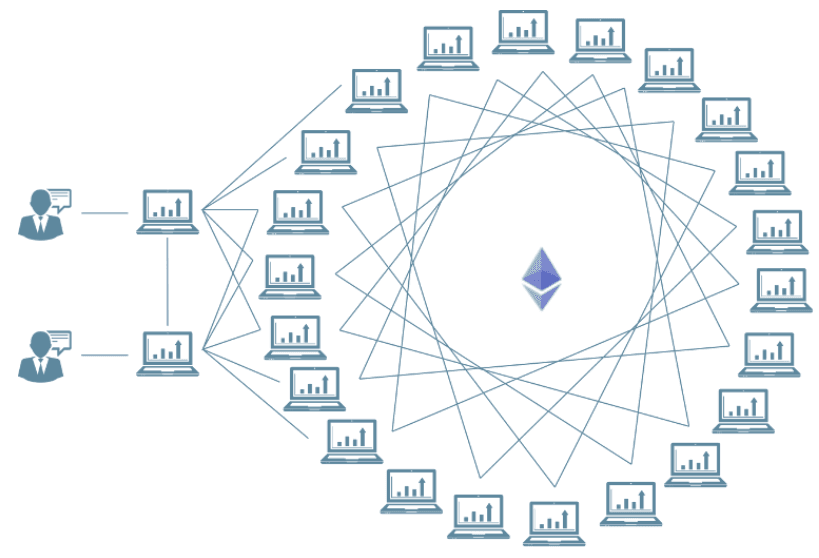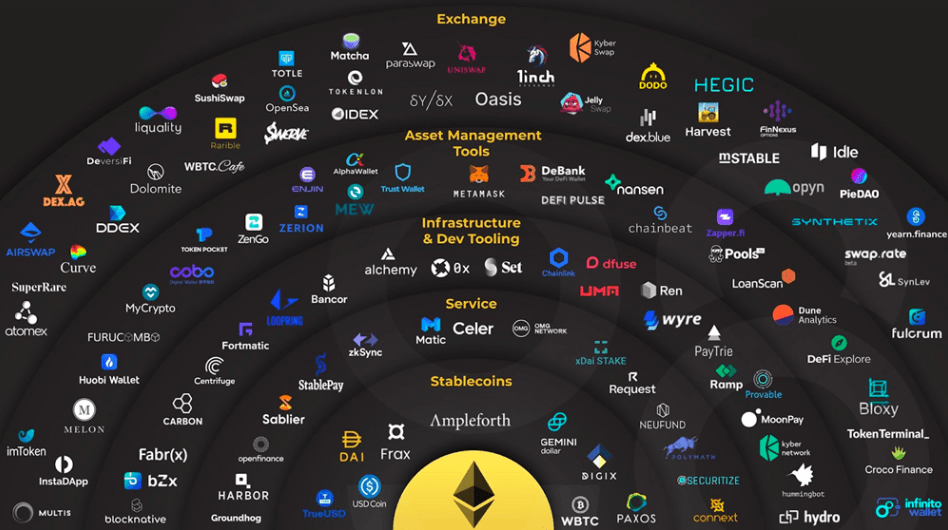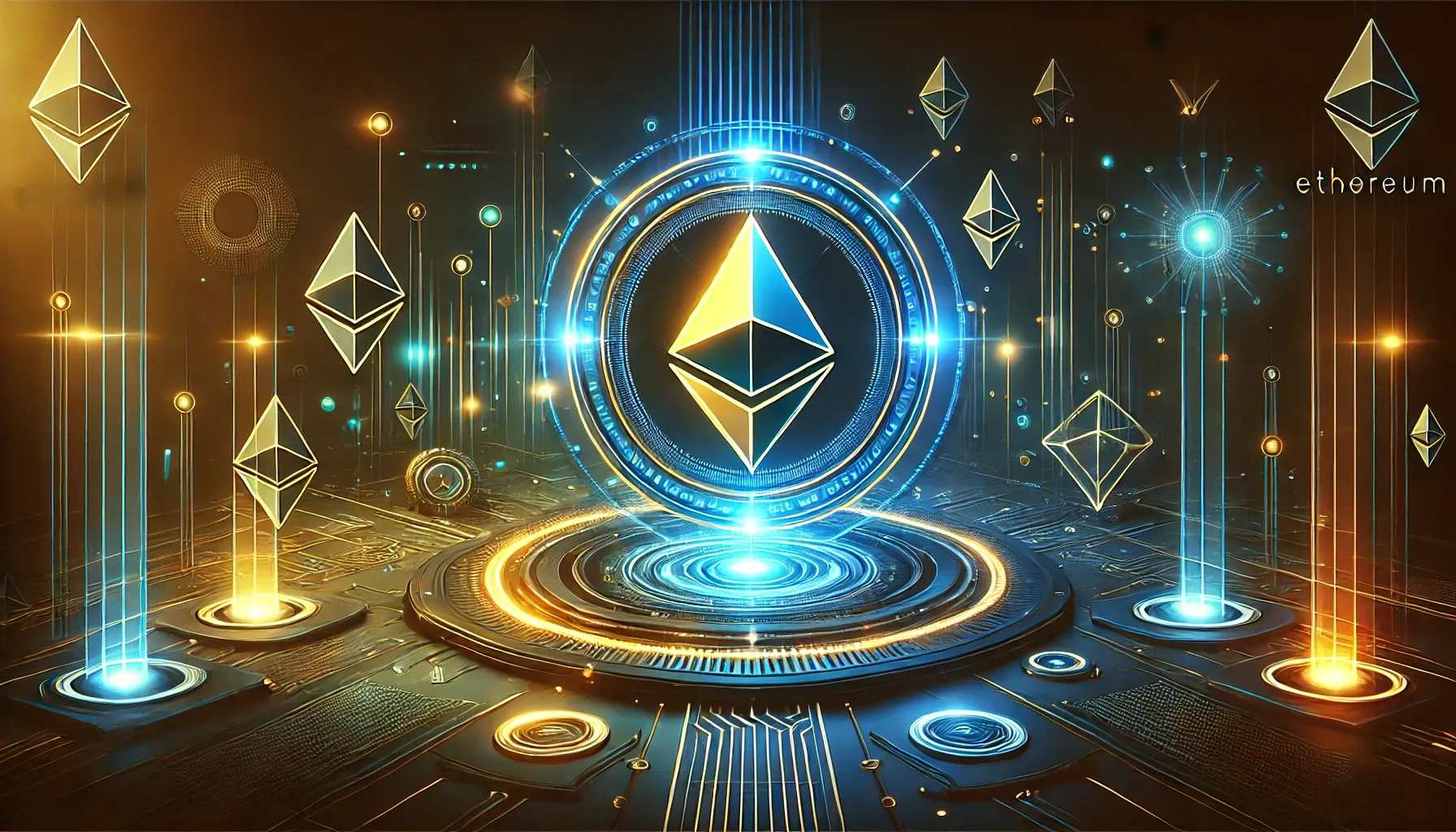Ethereum is much more than just a cryptocurrency. It’s a revolutionary digital platform that—through blockchain technology—enables the creation of decentralized applications (dApps) and smart contracts without intermediaries.
Discover the Universe of Ethereum: The Decentralized Revolution Transforming the Digital World
Imagine an Internet without intermediaries—where you have full control over your data and transactions, and any application can run automatically and securely without relying on large corporations or governments. Intrigued?
This is the promise of Ethereum, a decentralized network that is reshaping how we interact online. With its open, transparent, and tamper-resistant structure, Ethereum is changing the rules of the game in sectors as diverse as finance, digital art, and governance.
The Essence of Ethereum: Much More Than a Cryptocurrency
Origins and Inspiration: Vitalik Buterin’s Vision
Ethereum was born in 2013 thanks to the visionary mind of Vitalik Buterin, a young programmer who saw beyond Bitcoin. Buterin proposed a platform that would not only allow transactions but also offer a complete programming language (Turing-complete) to develop distributed applications and smart contracts. His idea was simple yet ambitious: create a system where blockchain technology could be used to automate agreements and build a new decentralized Internet.
Supported by a team of co-founders—including Gavin Wood, Charles Hoskinson, and Joseph Lubin—Ethereum officially launched in 2015, marking the beginning of a new era in digital technology.
At the Heart of the Network: How Does Ethereum Work?
The core technology of Ethereum is the blockchain—an immutable, public chain of blocks that records all transactions and operations. What really sets it apart is its ability to execute smart contracts: self-executing programs that trigger when predefined conditions are met.
- Decentralized Blockchain: The network is made up of thousands of nodes distributed around the world that work together to validate and record transactions.
- Smart Contracts: These are small programs written in languages like Solidity that allow for the automation of agreements without third parties. For example, they can manage loans, insurance, or even organise voting without relying on a central authority.
- Ether (ETH): This is the native cryptocurrency of the network, used as “fuel” to power operations and pay for transaction fees (known as “gas”).

Practical Applications: What Is Ethereum Used For?
Ethereum opens up a wide range of possibilities far beyond sending and receiving money. Thanks to its programmable nature, applications that once seemed like science fiction can now be created.
Key Use Cases
- Decentralized Finance (DeFi):
It enables the creation of platforms for lending, exchanges, and insurance without intermediaries. Notable examples include Sky.money, Compound, and Uniswap.
- Non-Fungible Tokens (NFTs):
Ethereum popularised NFTs, which represent digital ownership of art, collectibles, and other unique assets.
- Decentralized Autonomous Organizations (DAOs):
These entities are managed via smart contracts, allowing collective decision-making without a central leader.
- Gaming and Metaverses:
Projects like CryptoKitties and other blockchain-based games offer unique experiences where players can verifiably own their digital assets.
How Does This Benefit Users?
- Total Transparency: Every transaction and state change is public and verifiable.
- Security: Decentralisation and cryptography ensure data cannot be manipulated by any single entity.
- Interoperability: Standards like ERC-20 and ERC-721 allow different applications to interact seamlessly.

The Pros and Cons of Ethereum: A Balanced Analysis
To fully understand Ethereum’s value, it’s crucial to examine both its strengths and limitations.
Advantages of Ethereum
- Flexibility and Programmability:
Developers can create complex applications and customised smart contracts.
- Decentralisation:
Operating without a single control point makes the network resilient to attacks and failures.
- Robust Ecosystem:
With a vast array of dApps, tokens, and DeFi projects, Ethereum is the go-to platform for blockchain innovations.
- Transparency and Security:
Every transaction is recorded on the blockchain, making the system auditable and tamper-resistant.
- Continuous Upgrades:
Milestones like “The Merge” and upcoming scalability improvements (e.g., sharding) ensure Ethereum evolves with market needs.
Disadvantages of Ethereum
- Transaction Costs (Gas Fees):
During high demand, fees can spike considerably, affecting accessibility for small users.
- Scalability Issues:
Even with ongoing solutions, the network can become congested and slow during peak periods.
- Development Complexity:
Creating and auditing smart contracts requires high technical knowledge, which can lead to errors and vulnerabilities.
- Growing Competition:
Emerging blockchains offering lower fees and faster speeds may challenge Ethereum’s market share.
Summary List:
- Pros: Flexibility, decentralisation, security, robust ecosystem, ongoing evolution.
- Cons: High fees during congestion, scalability challenges, technical complexity, competition from other platforms.
How It Works Under the Hood: Gas, Mining, and the Shift to Proof of Stake
Understanding how operations are executed on Ethereum’s blockchain is key to interacting with the network.
What Is "Gas" and Why Is It Essential?
Gas is the unit of measure used to calculate the cost of every operation on Ethereum. Each transaction or smart contract execution consumes a specific amount of gas.
- Transaction Fee: The sender must pay a fee in ETH proportional to the operation’s complexity.
- Abuse Prevention: The gas system prevents infinite or excessively costly operations from running without payment, protecting the network from attacks and congestion.
From Proof of Work (PoW) to Proof of Stake (PoS)
Initially, Ethereum used a Proof of Work (PoW) mechanism similar to Bitcoin, where miners competed to solve mathematical problems to validate transactions and create new blocks. However, this method was very energy-intensive.
With the The Merge update in September 2022, Ethereum transitioned to Proof of Stake (PoS), a system in which:
- Validators: Users who own and “stake” their ETH become validators.
- Lower Energy Consumption: Without the need for intensive mining equipment, energy usage dropped by over 99%.
- Proportional Rewards: Validators earn rewards based on the amount of ETH staked and the duration of their commitment.
This change not only enhances the network’s sustainability but also makes it more scalable and secure.
Governance and Support: Who Controls Ethereum?
A common question is: Who owns Ethereum? In other words, who backs and controls the network?
Decentralisation as the Cornerstone
- No Central Owner:
Ethereum is a decentralized network, meaning there isn’t a single entity or individual that controls it in the traditional sense.
- Global Community:
The network is sustained by thousands of developers, miners (now validators), and users worldwide.
- Ethereum Foundation:
While not controlling the network, the Ethereum Foundation—a nonprofit organisation—plays a significant role in promoting, developing, and researching the platform.
- Key Figures:
Vitalik Buterin is undoubtedly the most recognised face of Ethereum, yet his role is that of a visionary and communicator rather than an all-powerful controller.
How Reliable Is Ethereum?
- Security and Transparency:
The immutability of the blockchain and open-source smart contract execution ensure a high level of security.
- Constant Updates:
The network is regularly updated to fix vulnerabilities and enhance performance, as seen with updates like The Merge and Shanghai.
- Inherent Risks:
Like any emerging technology, Ethereum faces challenges. Errors in smart contracts and scalability issues can affect its performance, but the community continuously works to mitigate these risks.
Key Points:
- Ownership: There is no single owner; it’s a global collective effort.
- Control: Governance is distributed among the community and supported by organisations like the Ethereum Foundation.
- Reliability: High security standards, though subject to inherent technical risks associated with innovation.
Frequently Asked Questions About Ethereum
What is Ethereum?
It is a decentralized blockchain platform that allows the creation of smart contracts and decentralized applications (dApps) using its native cryptocurrency, Ether (ETH).
What is Ethereum used for?
It is used to develop applications in areas such as decentralized finance (DeFi), non-fungible tokens (NFTs), decentralized autonomous organizations (DAO), and much more, facilitating secure transactions without intermediaries.
What are the pros and cons of Ethereum?
Its advantages include flexibility, decentralisation, security, a vibrant ecosystem, and continuous evolution. Its drawbacks include high transaction fees during congestion, scalability issues, technical complexity, and competition from other platforms.
Who owns Ethereum?
Ethereum has no central owner; it is a global collective effort supported by developers, validators, and users, with guidance from organisations like the Ethereum Foundation.
What is the utility of Ethereum and how does it work?
Its utility lies in automating agreements through smart contracts, running decentralized applications, and serving as a platform for innovations across various sectors. It operates using a public blockchain and a gas mechanism to regulate transaction costs.
Who backs and controls Ethereum?
No one controls Ethereum centrally. The network is supported by a global community and nonprofit organisations such as the Ethereum Foundation that drive its development and maintenance.
How reliable is Ethereum?
Its reliability is based on the transparency of the blockchain, robust decentralized validation processes, and continuous security updates. However, like any emerging technology, it faces inherent technical and market risks.
